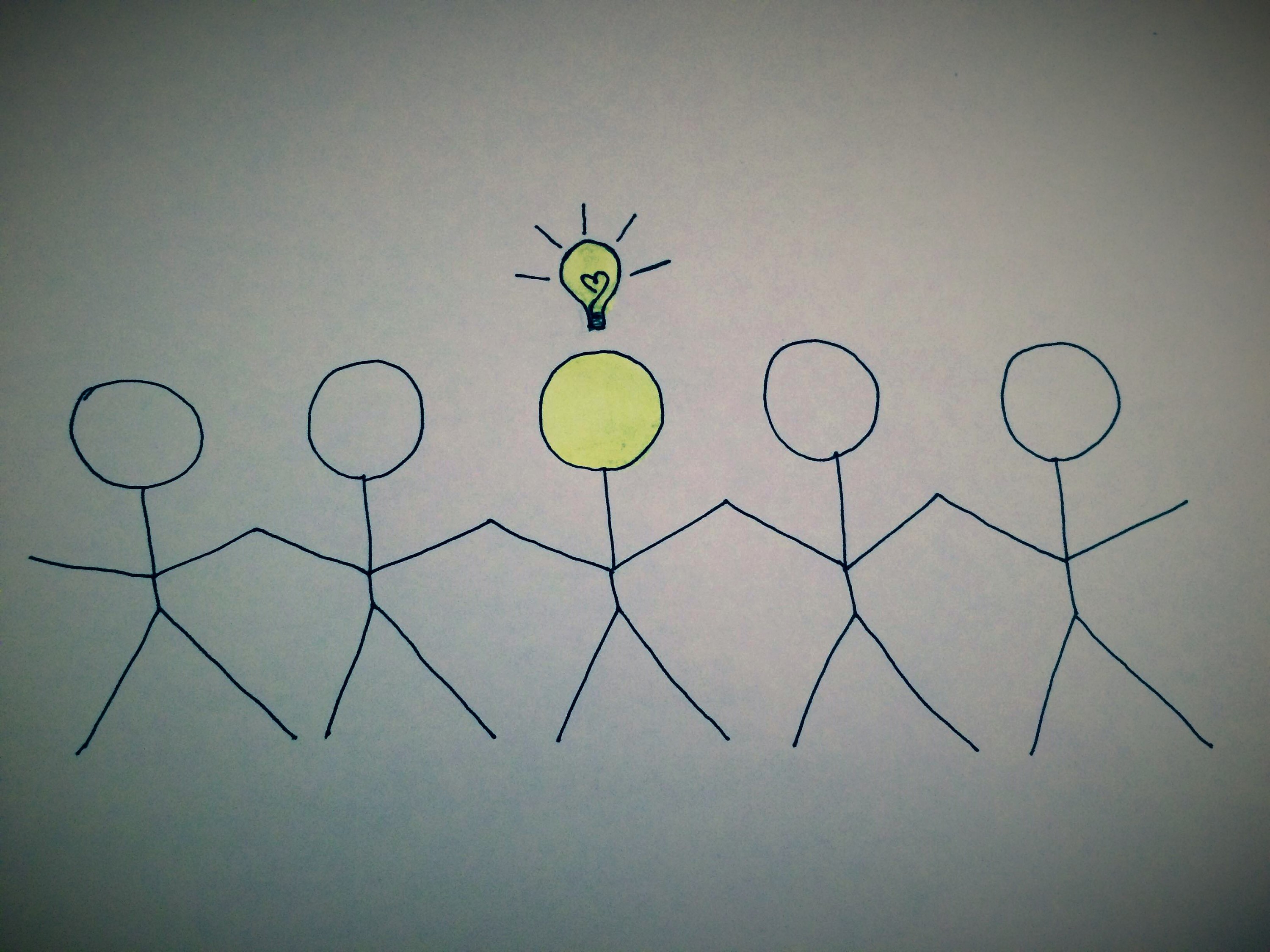Giving back to the world and helping those in need is a concept we are taught from a young age. Philanthropy is considered to be a noble initiative, and with incomes growing around the world there is more money going to charitable causes than ever before. In fact, it has been estimated that since 1960, over four trillion dollars have been spend on aid, an amount that is too huge to even comprehend. While there have been tremendous accomplishments in international development, from the eradication of polio in India to the astonishing economic growth of East Asia, there are nevertheless 2.8 billion people living under $2 a day – that is almost half the people on the planet – and this is an unacceptable statistic.
In the last few decades, a new movement has been forming that is changing the way altruism is being approached: this movement is called Effective Altruism (EA), spear-headed by Princeton professor Peter Singer. Rigorous cost-benefit analysis is conducted in order to understand which causes are most effective to give to; effectiveness is evaluated in terms of the most good/impact of a unit of money donated.
A charity called GiveWell has deemed four charities as conducive to effective giving, in terms of most impact per donation. These are the Against Malaria Foundation, Schistosomiasis Control Initiative (treatment for parasitic intestinal worms), De-worm the World and GiveDirectly (directly transferring money to poor individuals, allowing them to purchase that which they believe will help them most). These charities are doing some great work- for example a child can be de-wormed for only 53 cents, and a bed net to protect against malaria-carrying mosquitoes can be bought for around $5. Donations are going directly to these tangible solutions that are making a direct impact on the health and wellbeing of those in need.
Effective altruism equips the heart with the tools of the head. Doing philanthropy is more rewarding when you have a clear picture of what it is you’re accomplishing and when those accomplishments are significant.
-Johnstuart Winchell, a final-year student at McGill University in Montreal, Canada

In the Photo: Charity Credit: Impakter/Maha Kabir.
Despite the trillions of dollars that have been spent on aid in the last several decades, there are still so many pressing problems in the world, from maternal health to lack of education to extreme hunger. Therefore there is an inherent need for our aid to be more effective, for it to make more of a difference than the aid has before. Consequently, Evidence Action places great emphasis on getting the most bang for the buck. Johnstuart Winchell – a final-year student at McGill University in Montreal, Canada who started the first chapter of EA McGill last year – agrees that this is imperative to the altruistic process. He says that “not getting the most bang for your buck means that you could have saved more lives, cured more ailments, sent more children to school, and so on.”
While this makes sense and it would be hard to justify not giving to a cause where your money would be doing the most good, the question arises of what altruism should really be about. As Johnstuart says, “Effective altruism equips the heart with the tools of the head. Doing philanthropy is more rewarding when you have a clear picture of what it is you’re accomplishing and when those accomplishments are significant.”
Related articles: “JENNY SANTI REVEALS THE SECRET TO HAPPINESS“
On a trip to a village in rural Bangladesh after my high school graduation, I met a young boy named Robi who was one of the brightest and kindest children I have ever met. He was completely deaf, and communicated through hand actions and facial expressions. He was the only child in the village who didn’t attend school, though the primary school teachers told me that in terms his level of cleverness and perception he was one in a million. I was so touched by Robi’s story, and so saddened that in the circumstances of poverty he was born into, there was no system to integrate deaf individuals into society and thus he would never have the chance to reach his full potential.
One of the most prominent charities for breaking down barriers for deaf children in developing nations is Deaf Child Worldwide. Through donations Deaf Child Worldwide facilitates transportation to cities to learn sign language, awareness campaigns to challenge the stigma, and training courses in skills to help deaf people find employment, each costing approximately $15, $15 and $85 respectively.
Since meeting Robi the challenges of deaf children in the developing world has become an important issue to me, but effective altruists would say that it would be more optimal to give those $85 to de-worming 170 children rather than training sessions for one deaf individual. By helping 170 children be cured from intestinal worms, yes, I would be getting the most bang for my buck, but where do Robi or the millions of other deaf children fit into the equation?
Johnstuart also addressed the philosophy behind the EA movement. As he says, “effectiveness in altruism is important if you believe that all human lives are of equal value. Assuming you hold this belief, helping more people rather than fewer is the consistent thing to do,” he says. “If you give to a charity that will use your money to help one person instead of a charity that would help two, you are implicitly valuing that one life over the lives of two.”
 In the Photo: Robi in his village of Gush Kande. Credit: M. Ash Zul Parquear.
In the Photo: Robi in his village of Gush Kande. Credit: M. Ash Zul Parquear.
This is where I see a problem with the core philosophy of EA. It has a very black and white outlook on altruism; if you give to fewer people with the same amount of money you are valuing some lives more than others. I find that to be a harsh and unrealistic claim. By giving $85 to training a deaf individual in skills to find employment, I am not giving less value to the lives of children with malaria.
Altruism is not about doing a constant cost-benefit analysis in our minds. Sometimes there are experiences that we have that shift our attention towards one cause, without valuing that human life over the millions of others in need. Altruism is about making a difference in the lives of others, and I think that EA sometimes leaves out this human connection and empathetic aspect of giving.
Johnstuart argues that “giving would be more effective if people were more empathetic. Where is our empathy for children dying far away, if we are giving to causes that do much less, all because the beneficiaries live closer to us or suffer from ailments we are familiar with?” While I agree with this, I think that giving to a cause with which you have a close familiarity/connection is not necessarily akin to a lack of empathy towards other causes.
Mathew Snow – a Ph.D. student in philosophy at the University of Pittsburgh who wrote an excellent piece in the Jacobin Magazine, “Against Charity” – was also kind enough to give his views on EA. He pointed out the flaws in EA by examining the inconsistent application of its core moral principle. “We ought to reduce the suffering of others so long as doing so does not require sacrificing anything nearly as important. The reason we need philanthropists is that things like food, water, shelter, and basic medical care are produced and/or distributed according to capitalist market logic,” says Mathew. “Philanthropy makes human needs profitable where it otherwise wouldn’t be. I think the moral principle behind EA naturally lends itself to anti-capitalism. Yet most EAs are either pro-capitalism or neutral.”
In “Against Charity,” Mathew looked at the relationship between EA and capitalism. Many effective altruists encourage millennials to work for Wall Street, for example so that their large salaries can make a big difference if put to effective causes. But Mathew argues that capitalism is what has created many problems in the first place; “As charities and Effective Altruists publicize how badly the global poor need food, for example, capital acquires and controls their fertile land, using it to grow crops that can be sold for higher returns to populations with deeper pockets.”
 In the Photo: Effects of capitalism. Photo Credit:Impakter/Maha Kabir
In the Photo: Effects of capitalism. Photo Credit:Impakter/Maha Kabir
As he further argues in his article, “the capitalist class is transformed into our most potent possible savior, and the moral philosophers behind it all turn into accountants and marketers for charities…This insidious state of affairs could be avoided if we just consistently applied the uncontroversial moral principle underlying Effective Altruism: we ought to help others when we can do so without sacrificing anything nearly as important.”
One could argue that the world capitalist system is very much entrenched in the functionings of our world, and that EA is merely trying to make the most impact out of the global economic structure we are currently in. Mathew disagrees: “the movement cannot be conceived as trying its best to make the most difference given our global economic situation. That involves understanding the situation, seeing its problems for what they are, guarding against misconceptions about the significance of charity in this context, and actively fighting to change that global economic situation with more than just money. As it stands, EA doesn’t promote any of these things as a movement. Some members of it might, but this has no bearing on how we should evaluate the movement itself. The movement can do better. We can do better.”
Apart from the moral and philosophical roots of EA, what impact is it having on sustainable international development? Development is a very complex, multilayered phenomenon, with political, social, economic, cultural and environmental dimensions, to name a few. Yes, de-worming a child would substantially increase their quality of life and increase their ability to learn/be a contributing member of their community. But does it really contribute to the long-term development of a society, or is it more of a quick “Band-Aid” solution? What actions are being put in place to ensure that child does not get intestinal worms again, or that healthy children in a rural village will have the opportunity to make something of themselves?
Johnstuart explains that there are some EA organizations such as Open Philanthropy Project that focus on systemic change and tackling large structural problems. He also argues that non-systemic change can contribute to systemic change: “If people are healthier and more educated, they are more able to stand up to systemic injustice. Simply giving money to poor people [through GiveWell, which gives unconditional cash transfers to those most in need] may seem like a Band-Aid solution, but numerous randomized trials have demonstrated that these transfers have long-term effects.”
If people are healthier and more educated, they are more able to stand up to systemic injustice.
Mathew has an alternative view on the relationship between EA and development, addressing that EA interventions “may save lives but it leaves those saved in the same precarious position. This position of powerlessness is the deeper problem for which more “Band-Aids” will always be necessary. In some cases, they do consider how to empower the impoverished. People like Peter Singer praise micro-lending, Bill Gates and Mark Zuckerberg preach of empowerment by education and internet connectivity, etc. The idea is familiar: give a man a fish and he’ll eat for a day, but teach a man to fish and he’ll eat for a lifetime. The problem is that, in practice, these interventions are more akin to charging people to learn how to fish and loaning them money to buy fishing equipment, only to enter a global marketplace in which most will fail and those who succeed only do so at the expense of others in that community and around the world. This is not what empowerment looks like.”
It is important to remember the true goal of philanthropy: to do our best to give back to the world, and make a difference to the lives of those who have not been as lucky as we have. There is much debate on the true effectiveness of EA, not just on its effects on development but the very philosophical crux of its existence. EA is a relatively new field, and despite the limitations that have been discussed in this article, it is a revolutionary approach to philanthropy. It is an incredible feeling to know that the few dollars in my wallet can make such a profound difference to those suffering around the world.
Looking at the cost-effectiveness of aid is important, considering the plethora of problems our world faces despite the trillions of dollars that have been poured into development projects and humanitarian giving. Going forward however, altruism needs to be coupled with challenging the systems that are in place if we want to make a long-term, impactful difference in our world.
_ _




 In the Photo: Robi in his village of Gush Kande. Credit: M. Ash Zul Parquear.
In the Photo: Robi in his village of Gush Kande. Credit: M. Ash Zul Parquear. In the Photo: Effects of capitalism. Photo Credit:Impakter/Maha Kabir
In the Photo: Effects of capitalism. Photo Credit:Impakter/Maha Kabir





